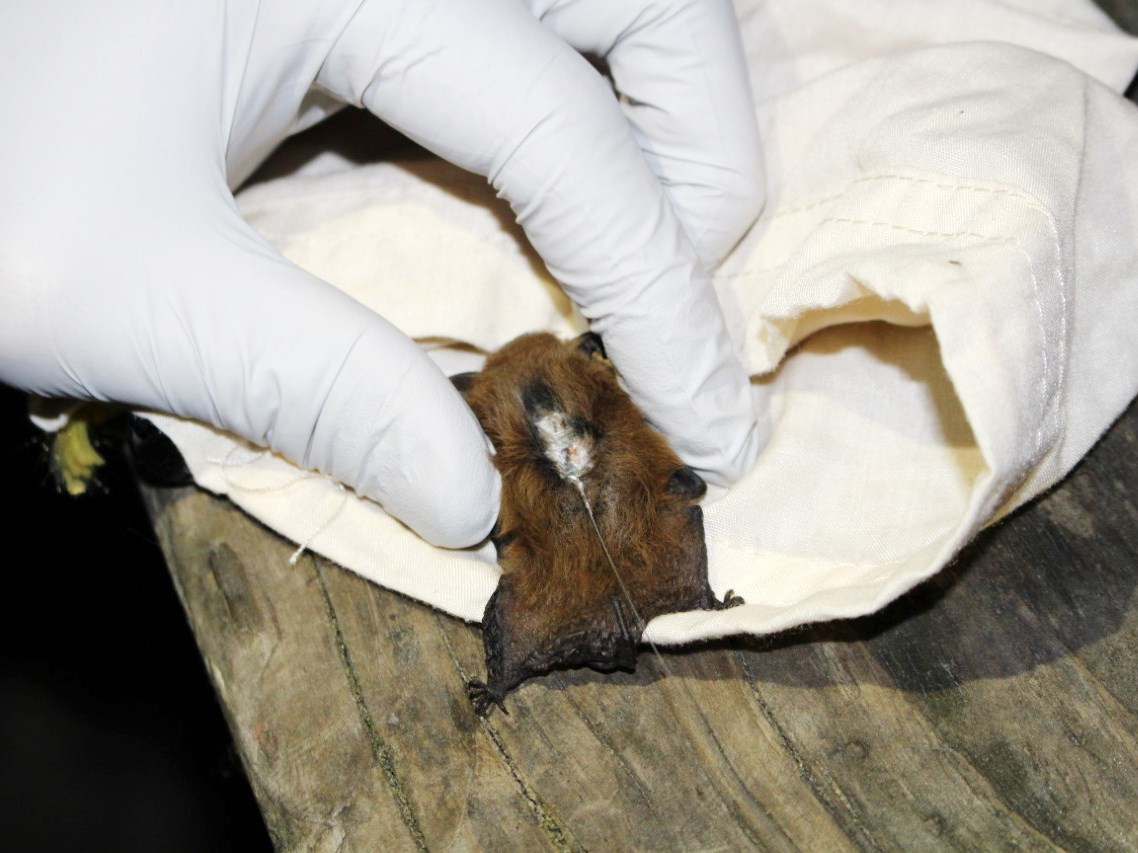Last updated: May 8, 2020
Article
Researchers Identify Winter Bat Roosts in Marin County

Katie Smith / Golden Gate National Parks Conservancy
April 2020 - Since 2017, One Tam partners have been collaborating with USGS to conduct the first countywide bat monitoring program in Marin. Each year, they have been monitoring two different sites, once in the winter, and again in the summer. This past February, the monitoring team spent seven nights mist netting at Cascade Canyon on Marin Municipal Water District land. They caught and assessed 26 individual bats. They also attached temporary radio transmitters to 11 bats representing four different species. Then, by following the transmitter signals, the team was able to locate winter roosts for eight of the bats. Some of the bats were utilizing 2-3 different roosts.
Bats are important indicator species. Climate change, habitat loss, roost disturbance, pesticides and insect declines, and disease can affect them. People also benefit from bats. Bats act as a highly effective form of pest control, saving the US billions of dollars each year, and reducing pesticide use. But bats in Marin have been understudied. The monitoring team aims to fill in crucial knowledge gaps, especially around where local bats roost.

Katie Smith / Golden Gate National Parks Conservancy
So far, radio telemetry has helped the monitoring team identify a variety of different habitat types and features that local bats are using for roosting and foraging. They have found roosts in bridges, trees, sheds, barns, and even a neighborhood bat box. They’ve also located several important maternity colonies. And while they’ve found many winter roosts, they have yet to find any long term hibernating colonies.
Besides radio telemetry, the monitoring team also conducts health assessments and acoustic monitoring. So far, the health assessments have not yielded any evidence of the fungus that causes white-nose syndrome in bats, although the fungus was detected in Chester, California in 2019. Acoustic monitoring has helped confirm the presence of at least 13 bat species in Marin County. This June the team aims to conduct their third year of acoustic monitoring at 36 sites across the county. Due to the risk of infecting local bats with SARS-CoV-2, the virus behind COVID-19, the team will not be doing any additional mist netting until further notice.
With all of the new information they are collecting, the Marin bat monitoring team hopes to help land managers make evidence-based decisions about how to conserve bats in their parks. In particular, knowing about roost habitats is key to protecting them. Their data is also establishing a baseline so that future monitoring will be able to detect changes in Marin bat populations.
For more information
- Contact Assistant Biological Monitor Katie Smith
- One Tam Bat Monitoring webpage
- USGS Bat Research in California webpage
- Pacific Coast Science and Learning Center Bats webpage
